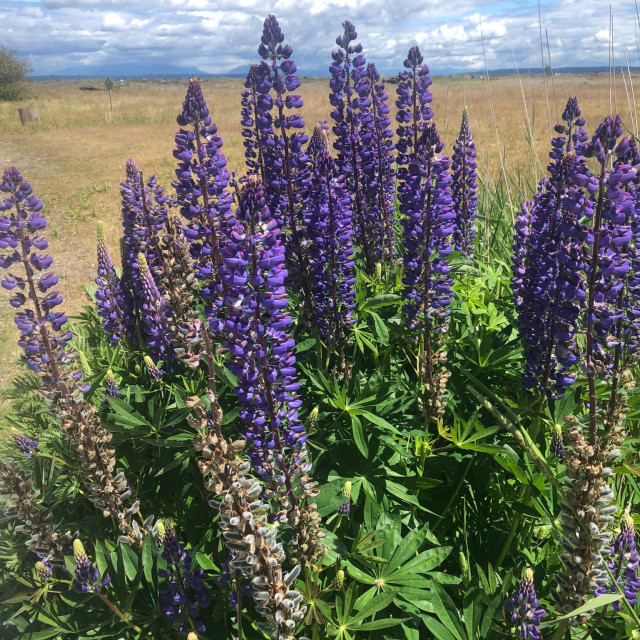COMMON NAME
Large-leaved lupine
SCIENTIFIC NAME
Lupinus polyphyllus
ALSO KNOWN AS
western Lupine, big-leaf lupine, garden lupine
Plant family
Pea (Fabaceae)
Plant group
Wildflowers and Herbs
Big-leaf lupine is a perennial forb with purple to blue flowers, distinguished from the other 200 lupine species in North America by hairless or sparsely hairy banner and keel.
69 reports
40+
OBSERVERS
69+
OBSERVATIONS
Identification hints
Big-leaf lupine is a perennial forb with purple to blue flowers, distinguished from the other 200 lupine species in North America by hairless or sparsely hairy banner and keel. The leaves are palmately compound with 9-17 leaflets (but sometimes as few as 5).
Did you know?
The genus name, Lupinus, comes from the Latin word for wolf, since it was believed that lupines 'wolfed' nutrients from the soil, preventing other plants from growing near it. In fact, lupines are able to fix nitrogen from the atmosphere, so that they are able to thrive in nutrient-poor soils where few other plants survive.
DISTRIBUTION IN TH U.S.
Alaska
,
California
,
Connecticut
,
Idaho
,
Massachusetts
,
Maryland
,
Maine
,
Michigan
,
Minnesota
,
Montana
,
New Hampshire
,
Nevada
,
New York
,
Oregon
,
Vermont
,
Washington
,
Wisconsin
HABITAT
Open sunny places on sandy loamy soil. In California plants generally occur below 7500 ft (2286 m) in moist sites. Prefers sun to partial shade in moist, cool soils. Native to Alaska, Colorado, Idaho, Montana, Nevada, Oregon, Washington, California and Wyoming, Big-leaf lupine was introduced in the Midwest and escaped cultivation.
ATTRIBUTES
Leaves
Palmately (fan-shaped) compound (divided) leaves, 11 to 17 oblong leaflets. The tops of the leaves are usually sparsely hairy.
Flowers
Flowers form a spike of up to 80 purple to blue, asymmetrical flowers. There can be one to several spikes per plant, and each spike can reach 8 to 16 in (20 to 40 cm). Each flower has five petals, is ½ to ¾ in long (1.5 to 2 cm) with a small yellow or white patch that turns red-purple with age. Some ornamentals may have pink or magenta petals. Flowers are typical of those in the Pea family, with a butterfly like corolla. There is a banner petal at the top, with two lateral wing petals, and two petals fused into a keel are set between the wing petals. In the center, there are 10 stamens, 5 with short filaments and long anthers, and 5 with long filaments and short anthers. Flowers bloom from May to August.
Fruits
The fruit is a dry hairy capsule (shaped like a pea pod) that turns dark brown and splits when it matures. The fruits are usually clustered towards the tip of the stem, 1 to 2 in (2 to 4 cm) long. Pods open explosively when ripe, and seeds are spread a short distance.
See Menu
- 2021 Chicago Botanic Garden. All Rights Reserved.
-
Creative Commons
BY-NC-SA 4.0 - Terms of Use
- Privacy Policy
- Data Sharing and Citation Policies
- 2021 Chicago Botanic Garden. All Rights Reserved.



